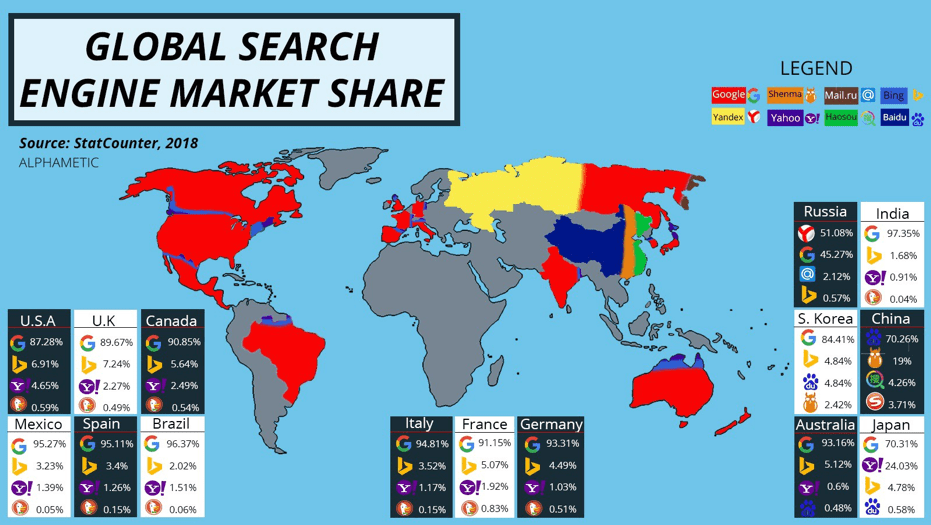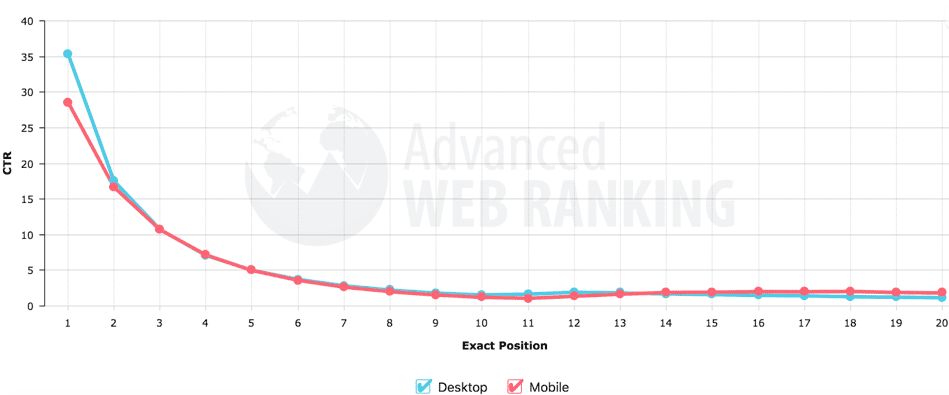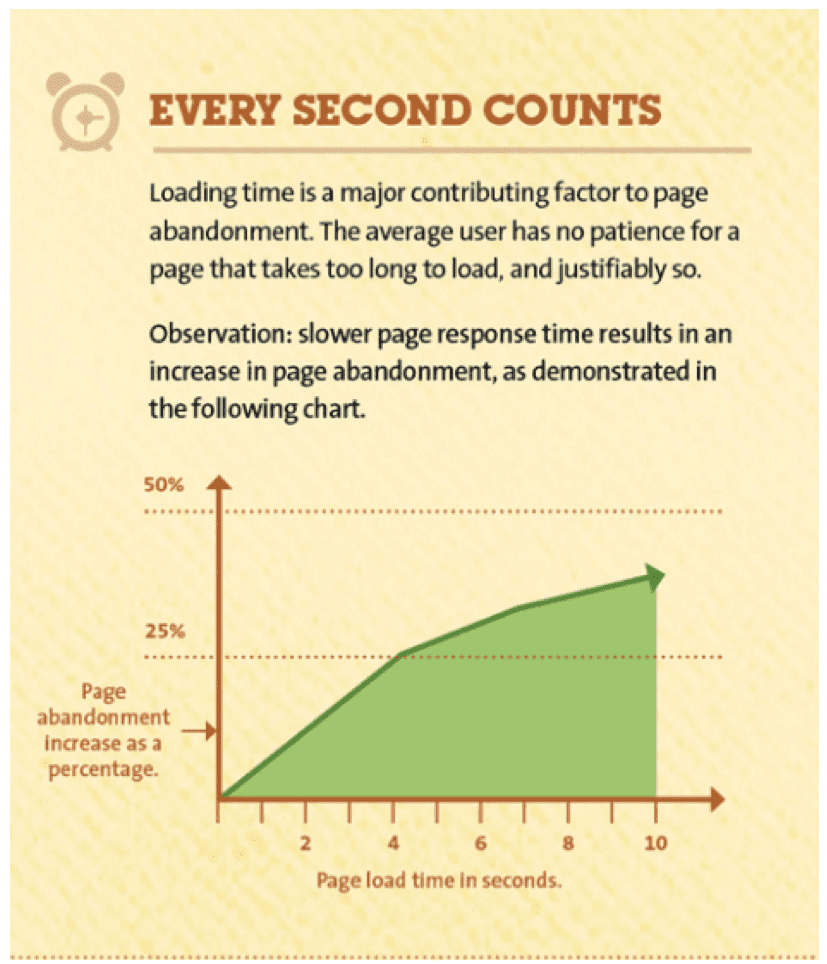Five top tips and best practices to follow to ensure your e-commerce site gets the best results
The world of e-commerce is an incredibly competitive space. Although the e-commerce and online retail sector is booming, new entrants and established players continue to raise the stakes by providing consumers with more choice, improved usability and new options to buy online. Brands selling online today need to have a compelling value proposition to stand out.
Download our Business Resource – E-commerce statistics benchmark
This guide is for anyone who works in e-commerce marketing who needs to review the latest customer adoption research and statistics or conversion rates to compare their performance or set targets for plans.
Access the E-commerce statistics benchmark
At the same time, search engine optimization (SEO) continues to evolve. Since 2010 Google has introduced scores of algorithm changes as it tweaks and changes the way it ranks new sites. Although SEO is more than just one search engine, with a dominant share of the market across the world, Google is the main player and it’s therefore prudent to optimize with them in mind.
Organic search remains the primary source of traffic for most sites, including e-commerce.
Wolfgang Digital’s E-commerce 2019 KPI report (based on an analysis of over 250 million website sessions and over €500 million in online revenue over the 12 months from July 2017 to June 2018) provides some very useful information. The data below shows the importance of organic search, which accounts for over 40% of visits across sectors.
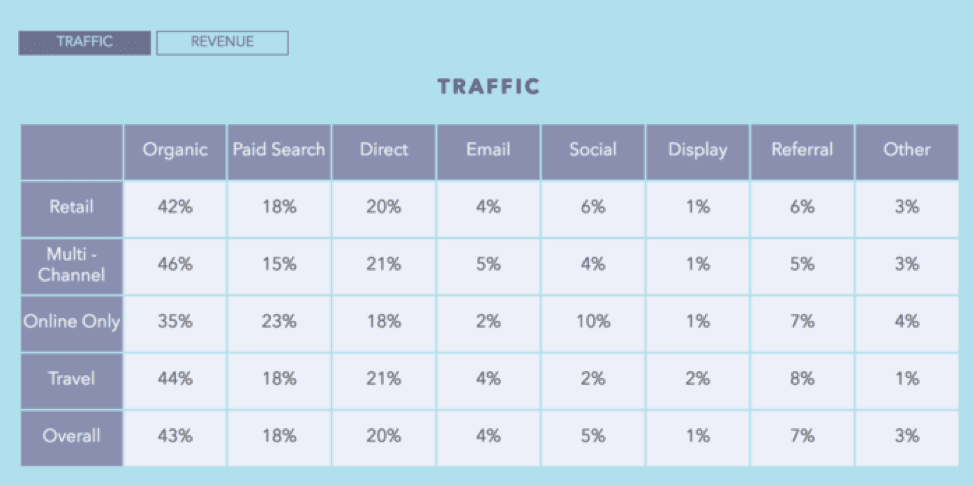
Organic search also drives the majority of sales and revenue across sectors.
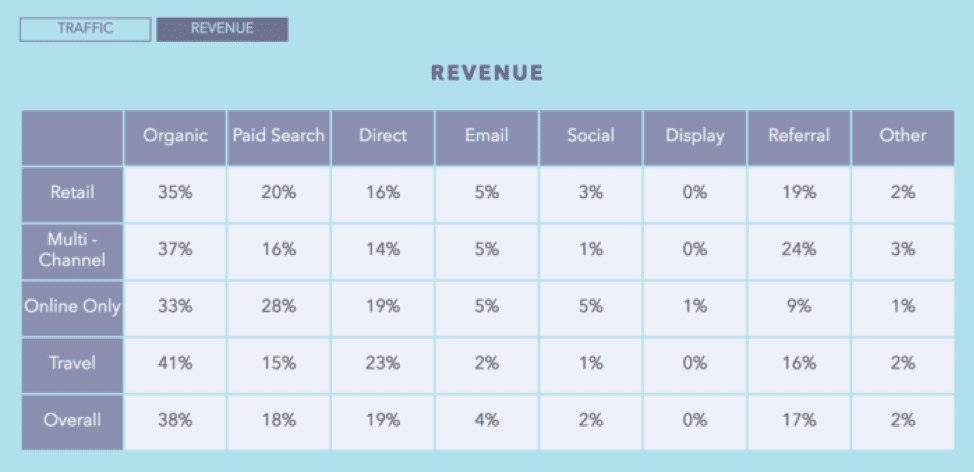
The importance of SEO for e-commerce
The importance of organic search for traffic acquisition means that brands cannot take SEO for granted. Good visibility in organic search means more brand impressions, clicks and sales. The higher the ranking, the better the opportunity, and this diminishes quickly with every ranking position.
Although I would always recommend having a multichannel traffic acquisition strategy, it’s worth acknowledging that whilst paid media can drive highly targeted traffic with good intent, it requires on-going investment. SEO requires consistent effort, but the bulk of investment is upfront and pays off in the long-term.
Five areas to prioritize
SEO is such a vast topic there are literally dozens of different areas you could work on to improve visibility for your e-commerce site. There are a handful of really helpful, comprehensive guides that I would recommend reading for those looking for a deep-dive overview of SEO for e-commerce. Three that really stand out are:
However, for the purpose of this post, I have picked out five areas that I would suggest focusing on as a priority. These areas will give you a solid foundation to continue optimizing and improving.
Keyword research
Keyword research is the foundation of any good SEO strategy. A well thought through piece of keyword research enables you to develop a clear understanding of what people are really searching for and the keywords you need to be using across your main product and category pages.
You should consider all the priority pages for your e-commerce site and the relevancy, search volume and ranking difficulty for any chosen keyword. One big consideration for e-commerce sites is that the majority of your keywords will be transactional rather than informational. Visits from these keywords will have high commercial intent.
Once you’ve identified the priority pages on your site, carry out the following steps:
1. Brainstorm
Capture ideas and themes that articulate what your product is about from the customer’s point of view. Consider what 'buckets' your products fall into.
Brainstorm themes and without worrying about specific keywords or phrases. The process will uncover how different key phrases can be grouped by theme and persona.
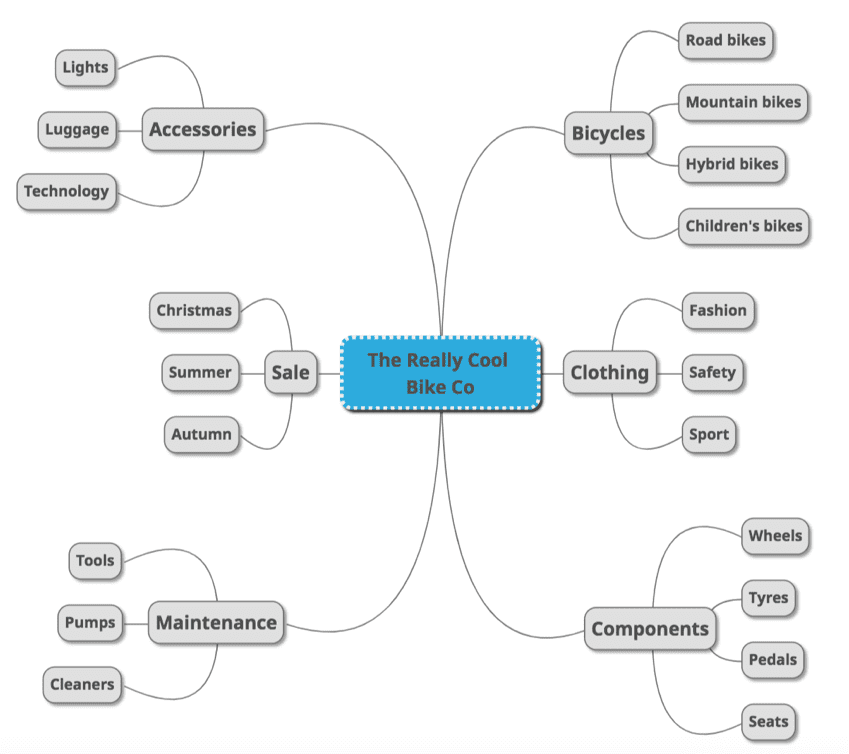
Rationalize the ideas into a manageable list. These will be your target themes to take into the next stage, e.g.:
- Bicycles
- Bicycle clothing
- Bicycle components
- Bicycle maintenance
- Bicycle accessories
2. Generate keywords
Using one or a combination of paid and free tools (e.g. Moz, SEMRush, Ubersuggest), take your key themes and plug them into the tool(s):
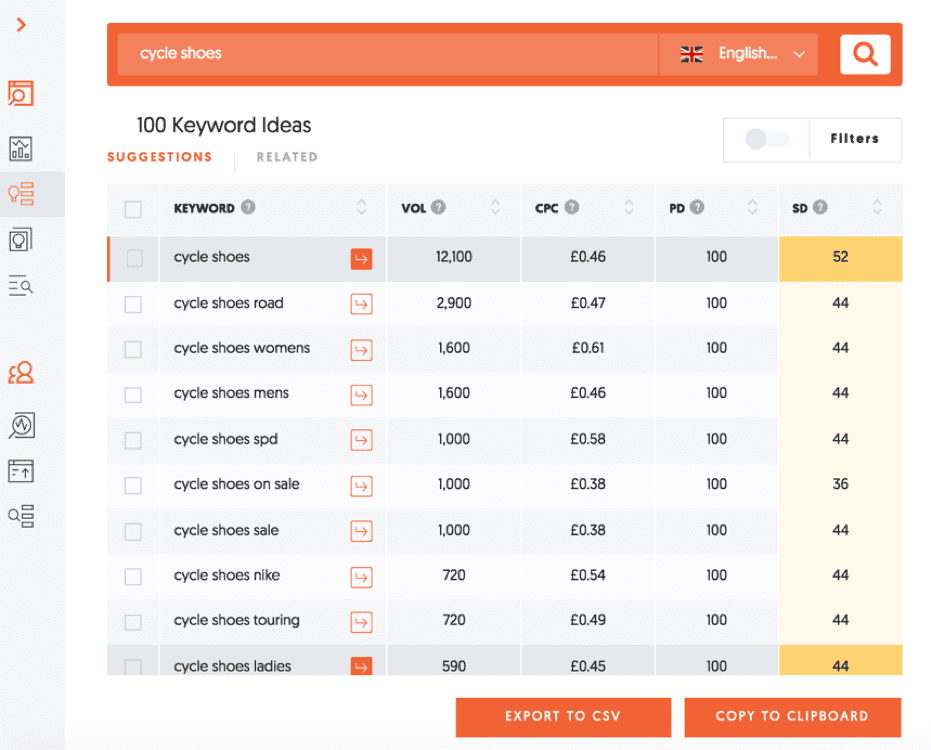
This will give you a high-level list of keyword options to start cross-referencing against your site and your competitors’ to check for relevancy, search volume and intent.
3. Group and refine
Group, filter and refine your keywords into an actionable short list. The main categories include:
- Brand terms - Popular terms that relate specifically to your brand and product.
- Primary terms - High-volume, popular terms that are likely to be your main focus.
- Secondary terms - Phrases with two to three keywords that are related to the primary term.
- Content-led terms - Phrases with three or more terms that are not directly related to your products/services but could be used to create content.
This grouping phase will allow you to identify how each of your main keywords can be used and the intent associated with each.
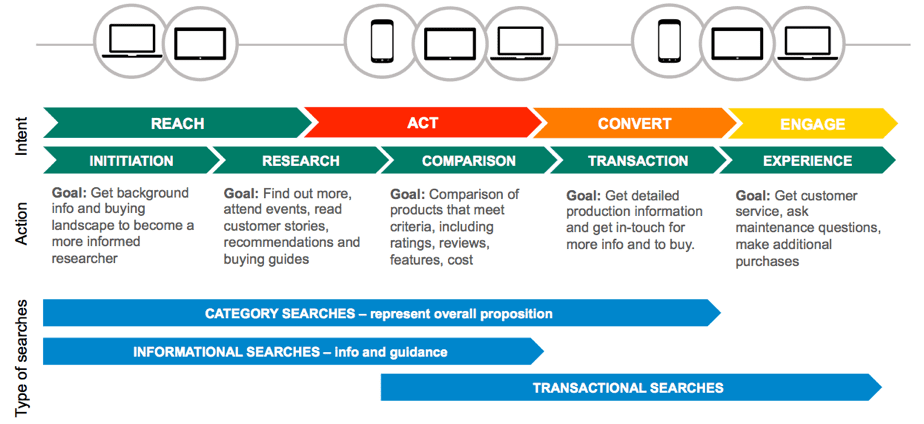
Create unique meta titles and descriptions
Once you’re confident of the keywords you want to use for your main pages, you can start updating your site.
One of the most effective on-page SEO tactics is to ensure you have unique title tags. Title tags remain a very important ranking factor so it’s important that each page is completely unique and that you eliminate duplicates.
The ideal title tag should contain the following criteria:
- Brand/business name
- Primary keyword/key phrase
- Length - keep to less than 70 characters
Good title tags should also be written in a way that appeals to humans, not search engines.
Although meta descriptions do not influence ranking, they do affect click-through rates. As with titles, descriptions should be a good length (160 characters max), customized for each page and include your target keyword. Along with the title, the description is what convinces the searcher to click through for more information:
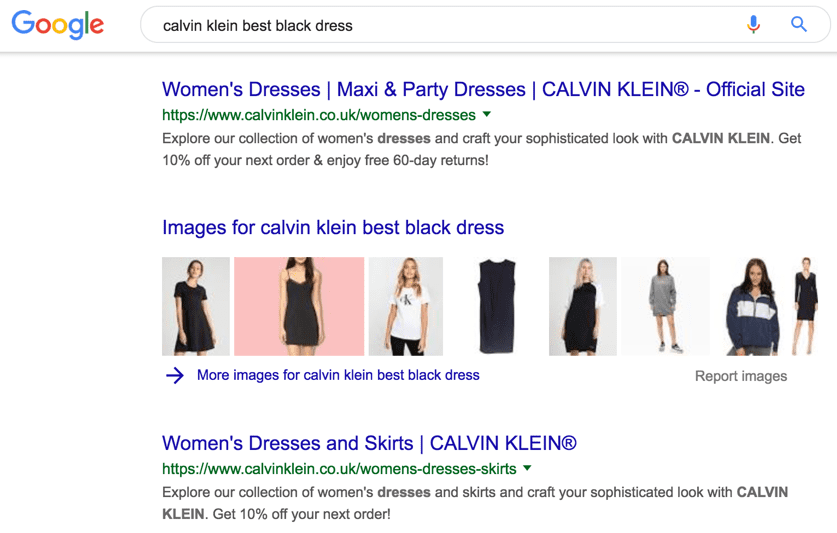
Include Schema markup
Schema markup can give you an advantage in a competitive SERPs by adding rich snippets to product pages. This can be effective for brands competing for a finite number of popular, high-volume keywords.
Schema markup gives users more information about what you’re selling and enables search engines to display product information within the SERPs. This combination can increase CTR to your product pages.
Consider the difference between these two listings:
Without Schema markup

With Schema markup

The second listing stands out and provides more information about what’s included on the page. This can increase CTR, which results in more clicks, traffic and sales.
According to Google:
"Add markup to your product pages so Google can provide detailed product information in rich Search results — including Google Images. Users can see price, availability, and review ratings right on Search results."
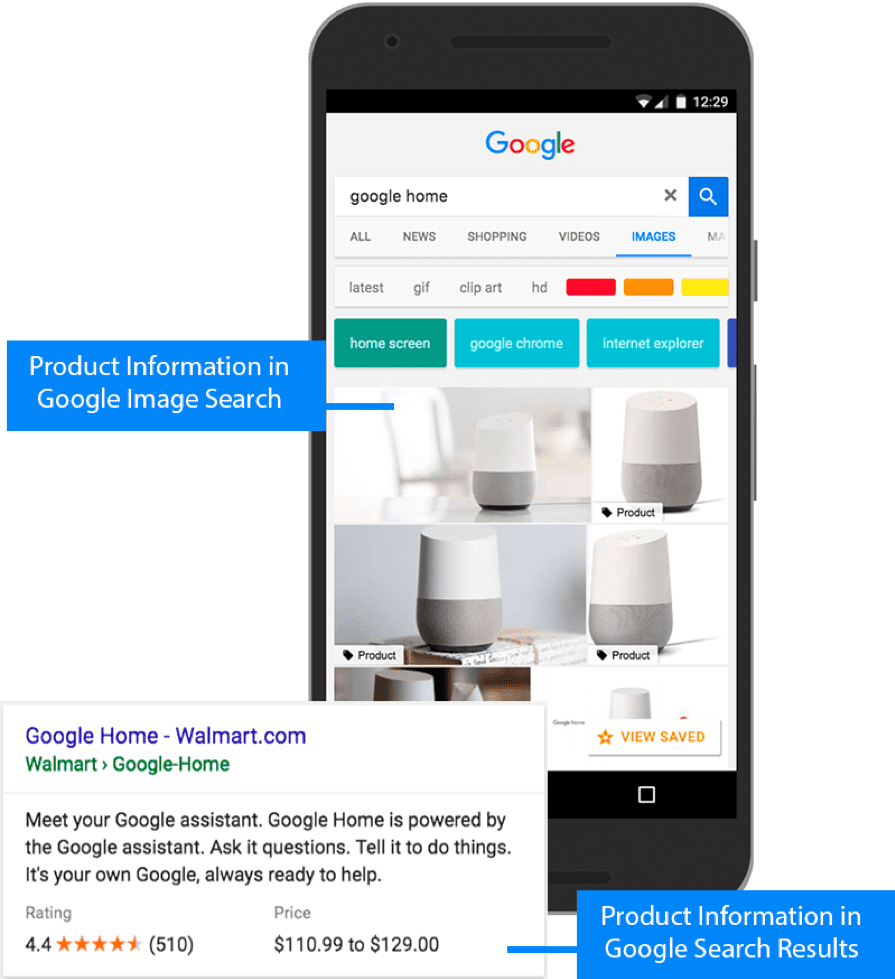
The most common Schema properties you can add to product pages include:
Moz provides a very helpful post on how to add Schema.org to your site.
Optimize for mobile
It seems a little old-fashioned to talk about mobile when the majority of users today use mobile to browse and interact with websites. However, as the chart below shows, whilst 53% of traffic to online stores comes via mobile devices, this translates to only 32% of revenue:
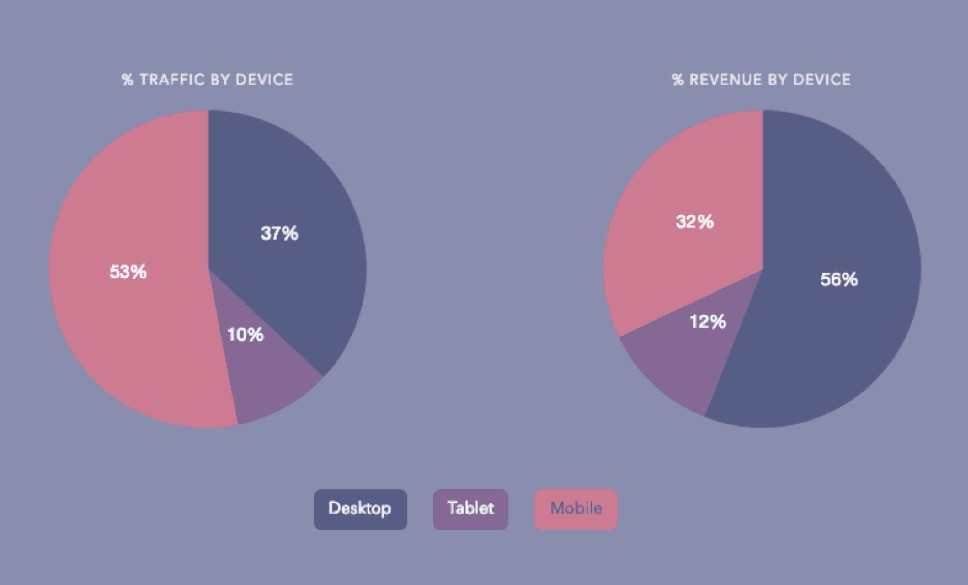
Although the majority of sales come via desktop, it’s important to ensure your e-commerce site is optimized for those viewing it on mobile devices. While mobile revenue is lagging, it is the fastest growing channel for those shopping online and is likely to continue to grow this year.
Online shoppers will default to desktop to make large purchases, most likely due to the confidence, they have in desktop sites’ UX compared to the fiddly nature of payment and checkout forms on mobile sites. I, therefore, see the chart above as a major opportunity for sites who are nimble and open to making innovations and improvements. If you can create a compelling mobile experience, you’ll have an edge over the competition.
I recently wrote about some of Google’s top mobile UX recommendations for e-commerce sites across various industries. Whilst Google’s best practices cover user experience more generally, it’s been long accepted that UX does impact organic search ranking. I would, therefore, recommend that new and established e-commerce sites take on board Google’s advice to create an optimized mobile experience.
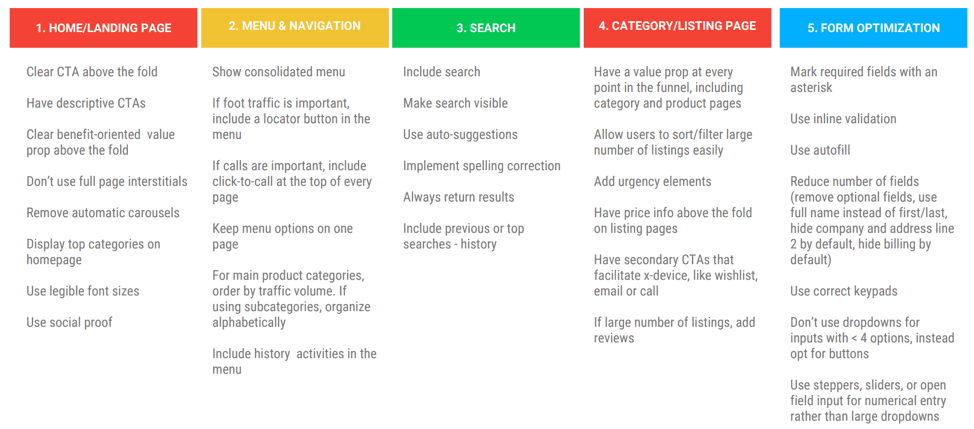
Improve your page speed
With the increasing use of mobile, page speed is now very important for users and search engines alike. Page speed is now considered to be an important ranking factor and this isn’t surprising considering the lack of tolerance consumers have for slow websites.
For e-commerce sites to compete in organic search, they need to load quickly. According to a study from
Radware, 51% of online shoppers in the US claimed if a site is too slow they will not complete a purchase.
Start by taking a baseline reading of your current site speed. You can use Google’s Page Speed Insights Tool to take a quick snapshot:
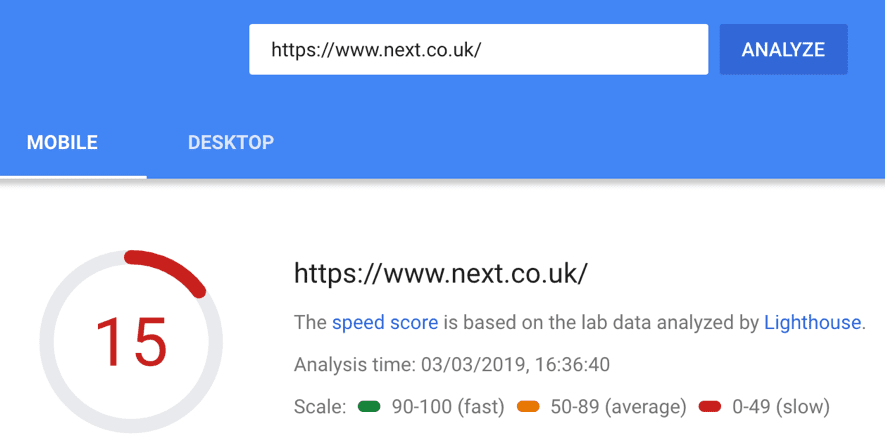
I would recommend taking a close look at both the desktop and mobile results and then compare against competitors to see how you’re performing in a broader context.
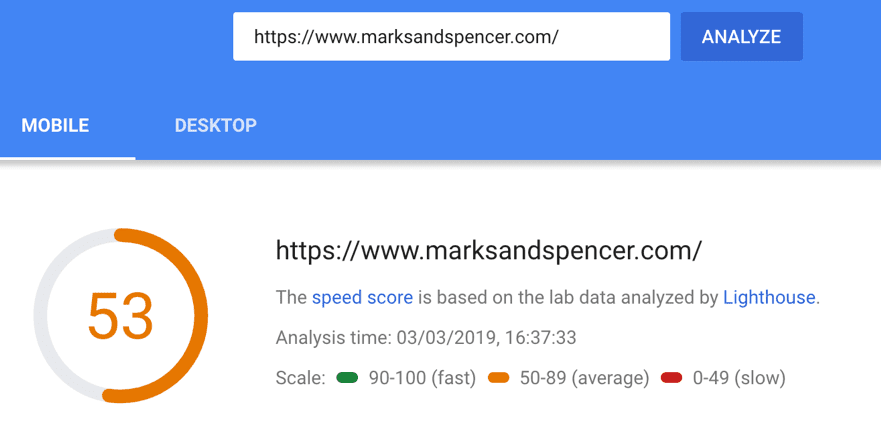
Crazy Egg provides a very comprehensive list of tips to improve site speed. The main advice is to remove any unnecessary elements from your pages, such as large images or plugins that don’t add value. Compressing images can be very straightforward and has a disproportionately positive effect on site speed.
Larger images take longer to load in the browser. If you can reduce an image’s size from 1,000×1,000 pixels to 500×500 pixels, you’ve reduced its weight by half. According to Crazy Egg, you can also save your images as lower-quality JPEGs with Adobe Photoshop.
Click "File" and "Save as…"

You’ll have the option to save your image as a JPEG at a quality level between zero and 12.
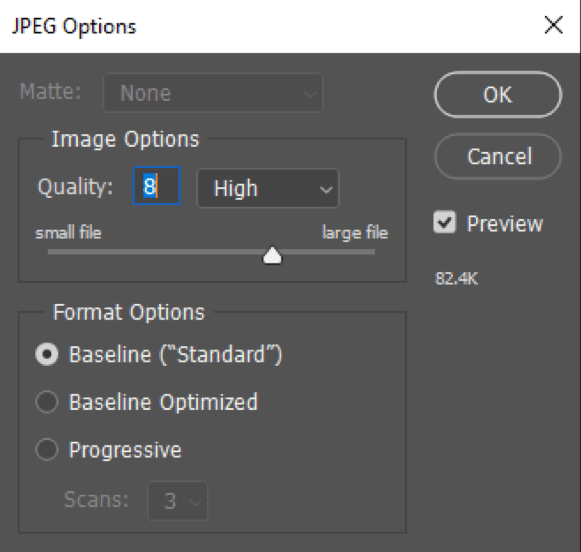
Move the arrow from a 12 to eight to reduce the file size. In the example above, the image went from 125K to 82.4K.
Conclusion
When consumers identify a need for a product or service, they’re likely to perform a Google search. They’ll be looking for a relevant result that leads them to a site that loads quickly and provides exactly what they’re looking for based on the keyword(s) they used in their search.
If your e-commerce website does not appear prominently in the results for those keywords, you will not bring in qualified, interested prospects. Regardless of how good your product may be, without a good search presence, they're as good as invisible.
Good e-commerce sites will be well structured, with good UX, imagery and product descriptions. However, they must also be optimized for organic search. SEO provides an efficient, cost-effective way in for searchers looking for products and the best practices outlined in this post provide a starting point to build on.




